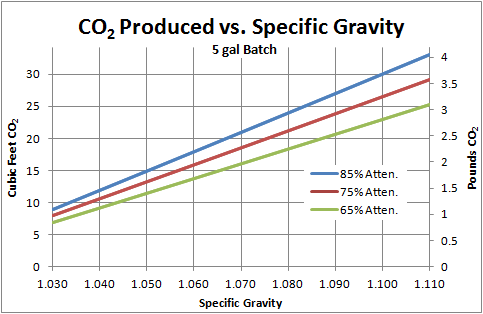Murphys_Law
Well-Known Member
This may be addressed elsewhere, if so I apologize...
I am going to try my hand at spunding on my next beer and have a few questions re: spunding and dry hopping:
As I understand it, you transfer the beer from the fermenting vessel into a keg with ~4 pts remaining for natural carbonation. I assume you leave the keg at room temperature?? If so, would you set the PSI on your spunding valve to ~20ish if you are looking for 2.3 vols, assuming the room is mid-60's? After a period of time (how long?) you would then place the keg in the keggerator to get to serving temp and hook it up to your CO2 at say, 12 PSI??
What about dry hopping? I usually dry hop with a few points left so where/how would this fit into the above spunding schedule? I assume you could put your dry hops in the spunding vessel but how would you best do an O2 purge on this keg before transferring from fermenter to spunding the vessel? Simply fill with CO2, purge...repeat?
And then you would probably want to move beer from spunding/dry hop vessel to serving keg, but since this beer is now carbonated are there any foaming issues when going from one keg to serving keg?
I currently fill the keg with sanitizer (I use saniclean due to low foam) and then purge the solution to another keg, then closed transfer from my Fermonster into the serving keg.
And a somewhat random thought/question: What about cold crashing? Does anyone dry hop/spund/cold crash or do you "cold crash" when you put the serving keg into the keggerator?
Or am I just overthinking this!
I am going to try my hand at spunding on my next beer and have a few questions re: spunding and dry hopping:
As I understand it, you transfer the beer from the fermenting vessel into a keg with ~4 pts remaining for natural carbonation. I assume you leave the keg at room temperature?? If so, would you set the PSI on your spunding valve to ~20ish if you are looking for 2.3 vols, assuming the room is mid-60's? After a period of time (how long?) you would then place the keg in the keggerator to get to serving temp and hook it up to your CO2 at say, 12 PSI??
What about dry hopping? I usually dry hop with a few points left so where/how would this fit into the above spunding schedule? I assume you could put your dry hops in the spunding vessel but how would you best do an O2 purge on this keg before transferring from fermenter to spunding the vessel? Simply fill with CO2, purge...repeat?
And then you would probably want to move beer from spunding/dry hop vessel to serving keg, but since this beer is now carbonated are there any foaming issues when going from one keg to serving keg?
I currently fill the keg with sanitizer (I use saniclean due to low foam) and then purge the solution to another keg, then closed transfer from my Fermonster into the serving keg.
And a somewhat random thought/question: What about cold crashing? Does anyone dry hop/spund/cold crash or do you "cold crash" when you put the serving keg into the keggerator?
Or am I just overthinking this!
















































![Craft A Brew - Safale S-04 Dry Yeast - Fermentis - English Ale Dry Yeast - For English and American Ales and Hard Apple Ciders - Ingredients for Home Brewing - Beer Making Supplies - [1 Pack]](https://m.media-amazon.com/images/I/41fVGNh6JfL._SL500_.jpg)










